Travel period Jan 2013
A Beautiful Mountain Forest Region
We visited Hakone in early January (winter season) as a stopover when travelling between Osaka and Tokyo. Hakone is a stunning town located in the far west of Kanagawa prefecture surrounded by mountains and Lake Ashi, with Mount Fuji providing a majestic backdrop and its part of the Fuji-Hakone-Izu National Park.

It also encompasses Hakone Shrine, a Shinto shrine with a red “torii” gate overlooking Lake Ashi, which can be toured by boat, as well as the boiling sulfur springs of the Owakudani Valley.
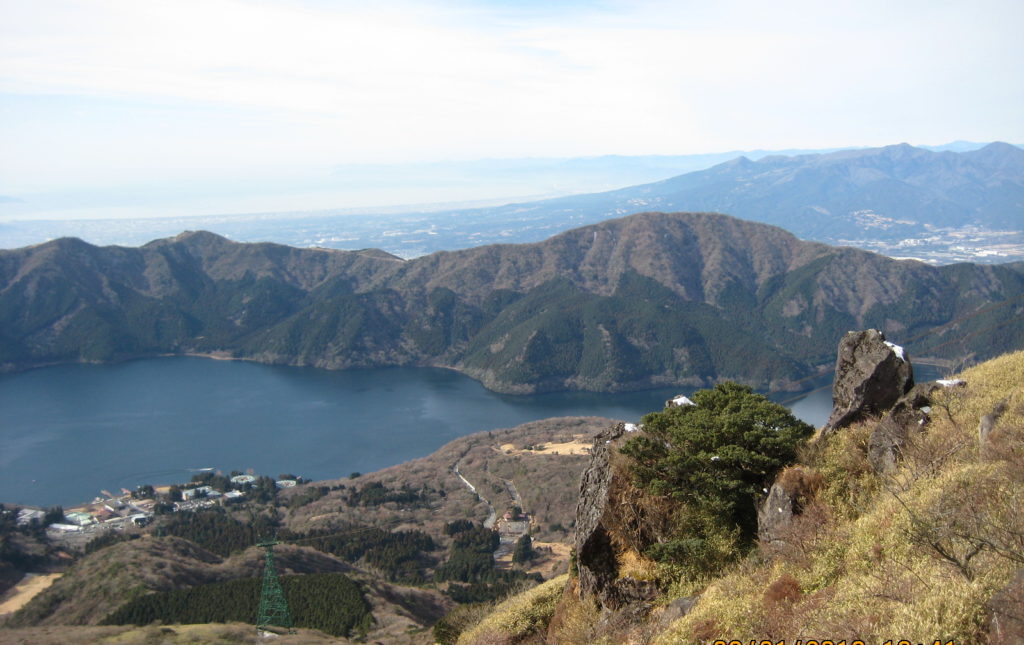
Hakone is easily accessible by train, car or bus, and is just 90 minutes away from Tokyo or Yokohama, making it a popular day trip destination. Famous for its hot springs, natural beauty and attracts many Japanese and international visitors all year round. Hakone is known for its scenery during all four seasons, and the entire Hakone region has been designated as a Japanese National Geopark by the Japanese Geoparks Network.
Hakone Free Pass
A day trip to Hakone from Tokyo is not only relatively simple but also relatively cheap thanks to the great minds who created the Hakone Free Pass. These passes are sold by the Odakyu Group and it covers all the transport you’ll need, the Tozan train and cable car, the Hakone ropeway, a sightseeing cruise on Lake Ashi and a variety of buses between locations too. You can use all of them multiple time and in either direction.
The Hakone Free Pass available for either two or three consecutive days. The Free Pass also provides several discounts to many of the area’s tourist attractions and hot springs.
The Free Pass can be purchased either in Hakone or at Odakyu’s base in Shinjuku. It seems that it’s also possible to reserve a pass online before you travel however you will need to pick it up in person anyway. The passes are a significant investment up front but a real godsend when it comes to getting around the area.

Getting to Hakone
Travelling from Tokyo:
- If you already have a JR Rail Pass, the fastest way of getting to Hakone is to catch the Shinkansen (Japanese bullet train) from Tokyo or Shinagawa stations to Odawara Station (it takes about 35 minutes), then change onto the Hakone Tozan Railway line.
- If you do not have a JR Rail Pass, you could travel via Shinjuku Station on the “Romancecar” or Odakyu’s limited express train to Hakone-Yumoto Station. It is a charming, retro model of the old-fashioned trains which would take travelers to and from Hakone decades ago. The whole journey should take approximately 85 minutes, (reservation in advance is required). From Hakone-Yumoto Station you then change onto the Hakone Tozan Railway line.
We traveled to Hakone from Osaka, we board the Shinkansen Hikari from Shin-Osaka to Odawara Station, it takes about two hours and twenty minutes.
To get to our hotel from Odawara Station, we board the free shuttle service from JR Odawara Station’s West Exit. The free shuttle service was provided by the hotel we stayed in.
Accommodation
We stayed at The Prince Hakone Lake Ashinoko, beautifully set on the shores of Lake Ashinoko, this mid-century hotel is in tranquil surrounds with a timeless design and an eternal sense of anonymity. The staff were friendly and helpful with what we needed, our room was spacious with views of Mount Fuji from the balcony. Truly a dream place for vacation! ????
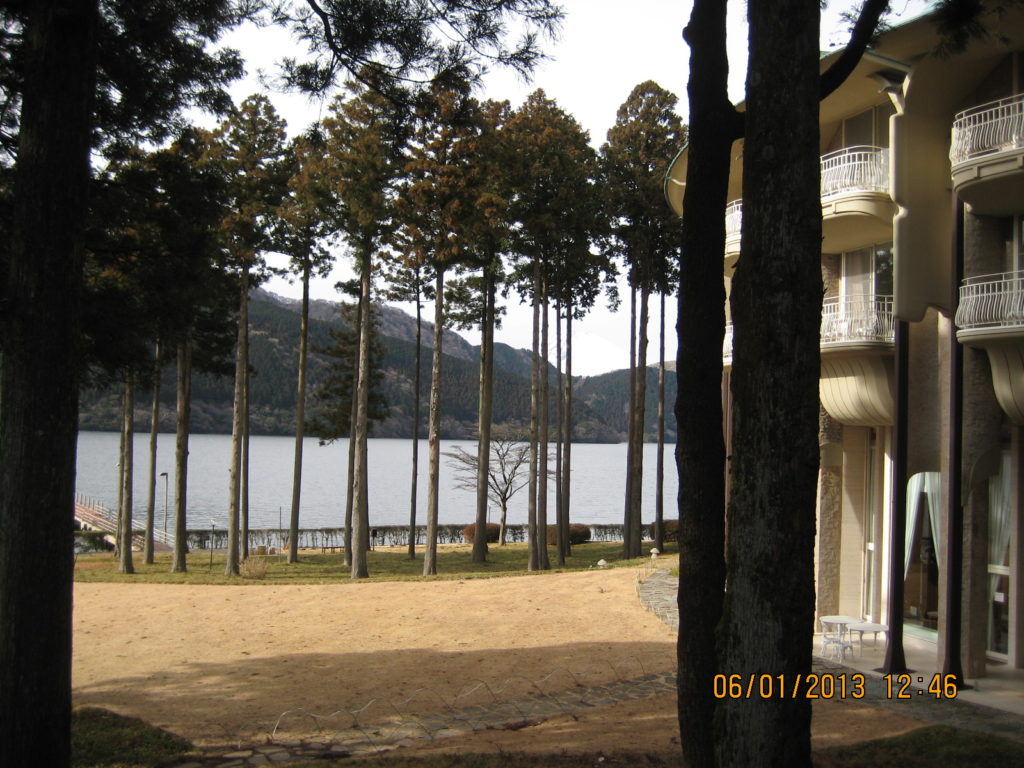
We got to the hotel late in the evening. Tired and hungry we dropped our bags, had a quick shower and went to one of their three onsite restaurants called Nadaman Garden serve Japanese Cuisine. Using locally-grown, seasonal ingredients the food was artfully prepared in the traditional Kaiseki style it was delightful in the eyes as well as the palate. It was absolutely divine!
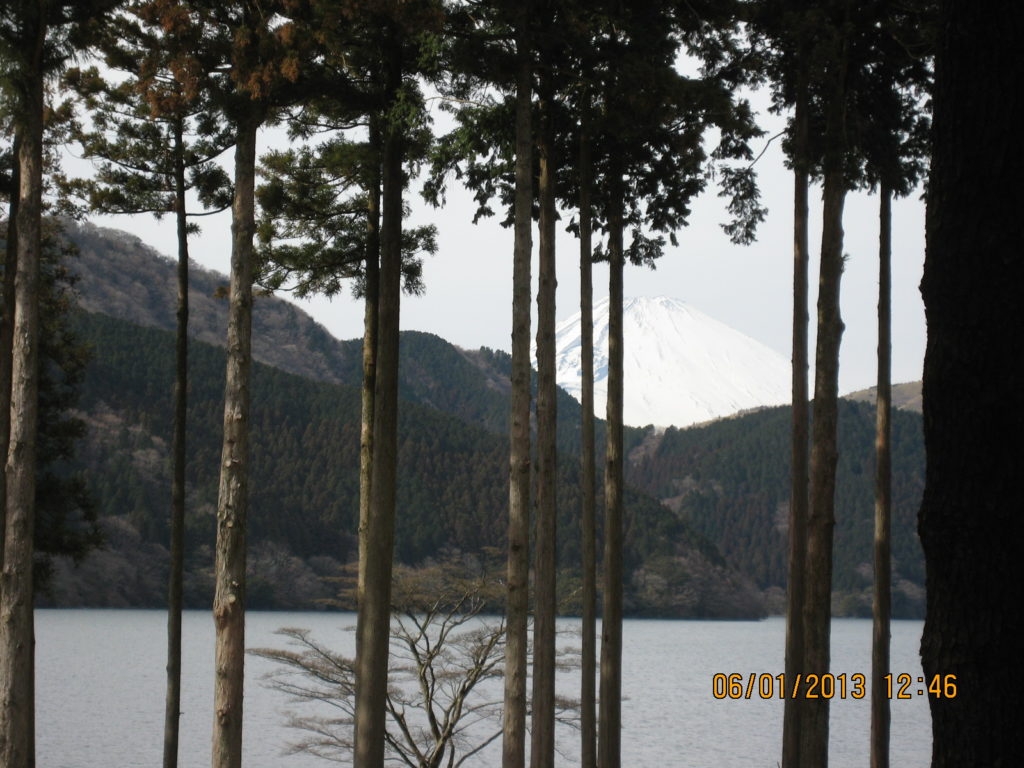
The next day when we woke up in the morning, we flung open the curtains of our room and were greeted with an amazing view of Mount Fuji in the distance, set against a cloudy sky. We were swept away by the serene ambiance of Japan’s natural beauty. It was absolutely spectacular! What a great start to the day. Couldn’t love it more.
Breakfast was lovely with Western and Japanese buffet. Soon after breakfast we were excited to explore the town of Hakone. In this post below are our highlights of Hakone:
Hakone Komagatake Ropeway
The Hakone Komagatake Ropeway, leads from the shore of Lake Ashinoko to near the Komagatake peak of Mount Hakone.
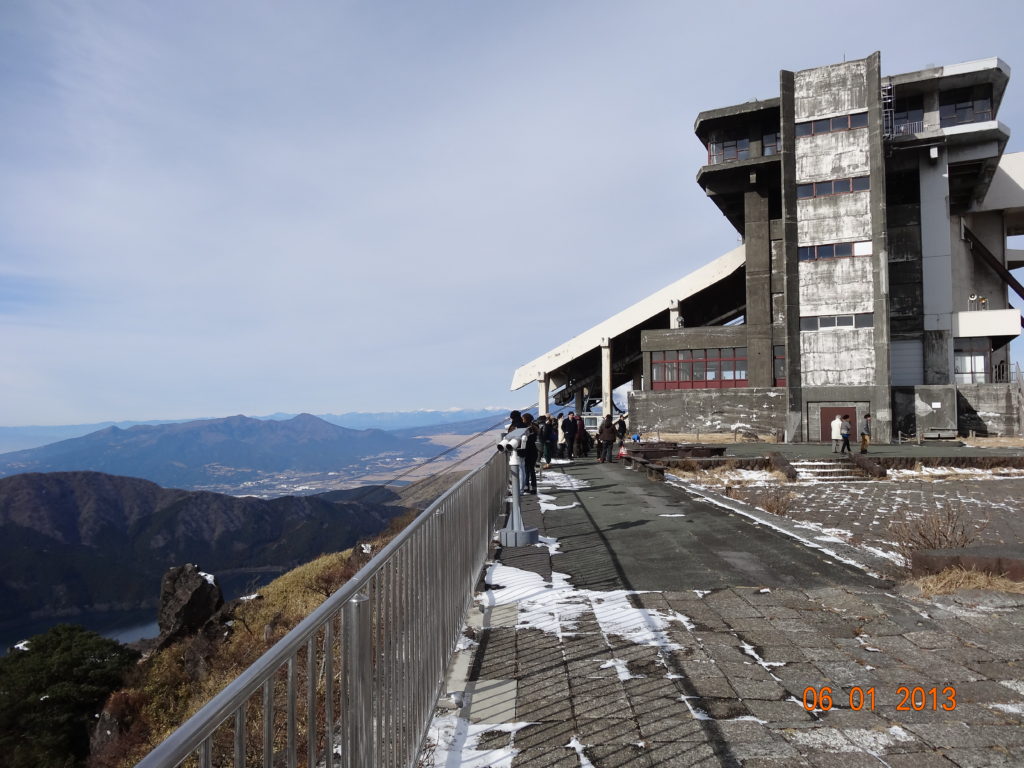
Mount Komagatake is the central cone located in the middle of the Hakone caldera, and connecting to it is the 1800m-long Hakone Komagatake Ropeway. Going up at a steep angle, a grand landscape opens up in front of our eyes which includes Lake Ashi, the outer rim of the Hakone crater and then Mt. Fuji. Below us are an afforested area of Japanese cedars halfway up the mountain.

Once you are at the top the view of Mount Fuji was unbelievably stunning from up here one side lets you take in the breathtaking views of Hakone National Park, while the other gives you a distant view of Mount Fuji.
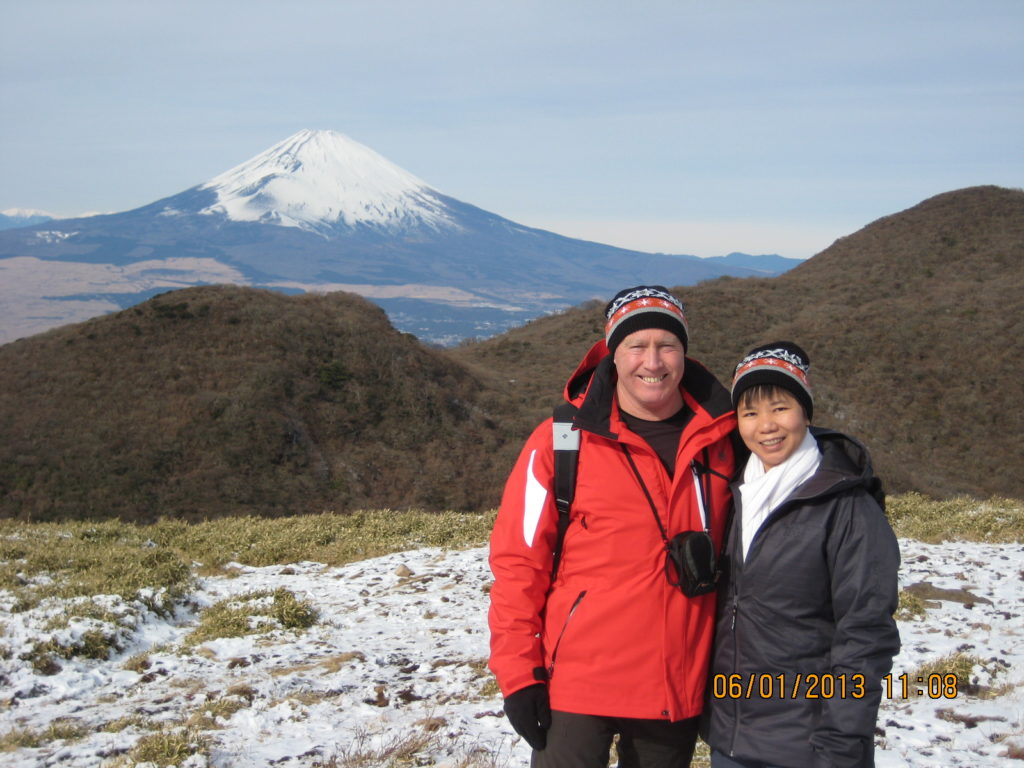
Hakone-Mototsumiya Shrine
A three minutes’ walk away from the top station for the Komagatake Ropeway, we came across the rear shrine for Hakone Shrine, Hakone-Mototsumiya Shrine. The red shrine pillars and a red gate against the cloudy blue sky catches our eyes. It’s so impressive!


Mount Komagatake which is seen as a holy mountain to the north was once worshiped as such. Even now, it is popular as an energy spot. The construction of the current incarnation of Hakone Shrine took place in the middle of the Nara Era. But even before then, the mountain was treated as holy, so it is said that this was the beginning for Hakone Shrine.

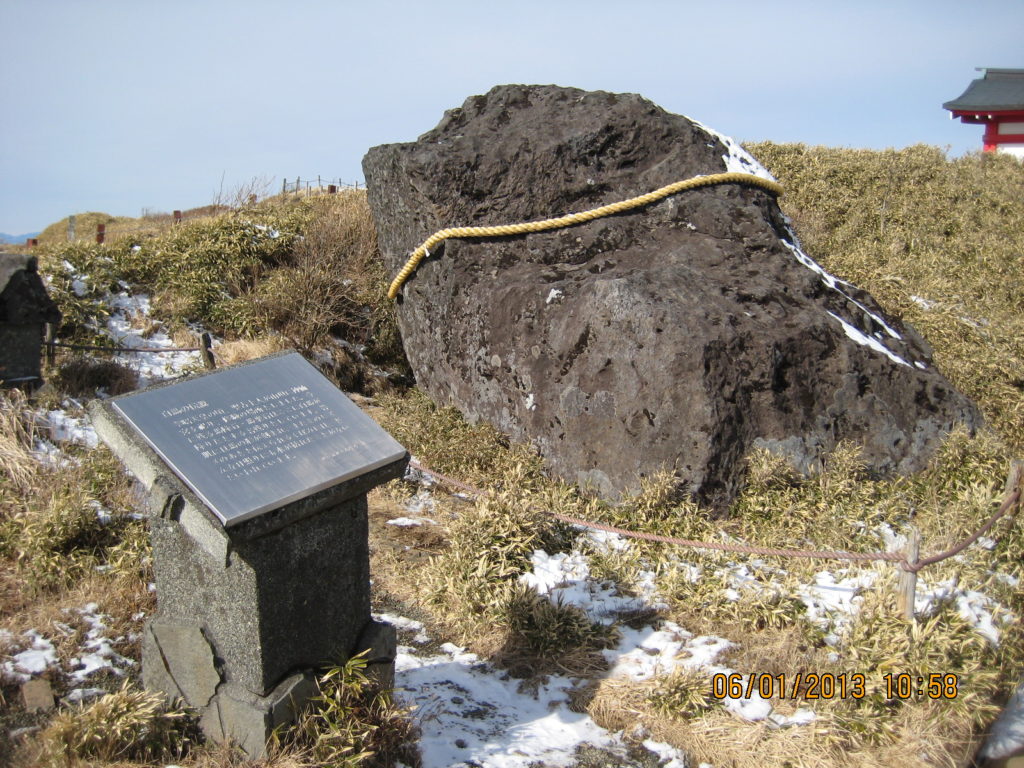
On our way up to the shrine. Just before the red shrine gate, there was a rock with a sacred straw rope. It is called “Bakou-seki” meaning that God came down on the rock with his white horse.
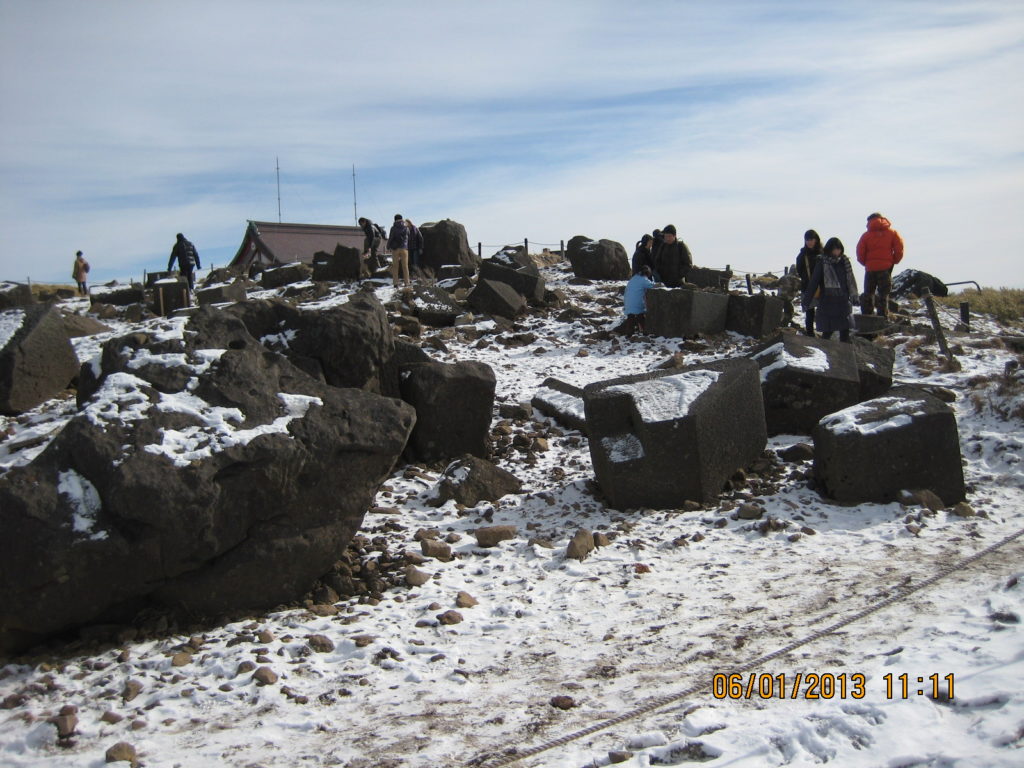
If you go left and behind the ropeway station, a magnificent Mount Fuji view is waiting for you. We couldn’t resist but admiring the grand panoramic view from the peak. If you go along the path to the right, you will look down a gentle ridge of mountains, and view Sagami Bay and Odawara beyond them.
Taking a Hike from the Peak
If you want to enjoy seasonal highland flora, you can take a hike from the peak. The hiking course that takes you toward Owakudani Station via the sacred mountain that is Hakone’s highest peak has a total length of 3.5 km and takes around two hours and ten minutes to navigate. Highland flora makes their home around the peak and you can enjoy the grass and plants there all throughout the year.

There is also another course that will get you to Owakudani Station that passes by Mount Sounzan which is 3.2 km long and takes about two hours. Since both courses are liable to close with any warnings of volcanic activity from Mt. Hakone, it is strongly recommended to check the homepage beforehand.
Lake Ashinoko
Lake Ashinoko was formed in the caldera of Mount Hakone after the volcano’s last eruption 3000 years ago. Today, the lake with Mount Fuji in the background is the symbol of Hakone. The lake’s shores are mostly undeveloped except for small towns in the east and north and a couple of lakeside resort hotels.
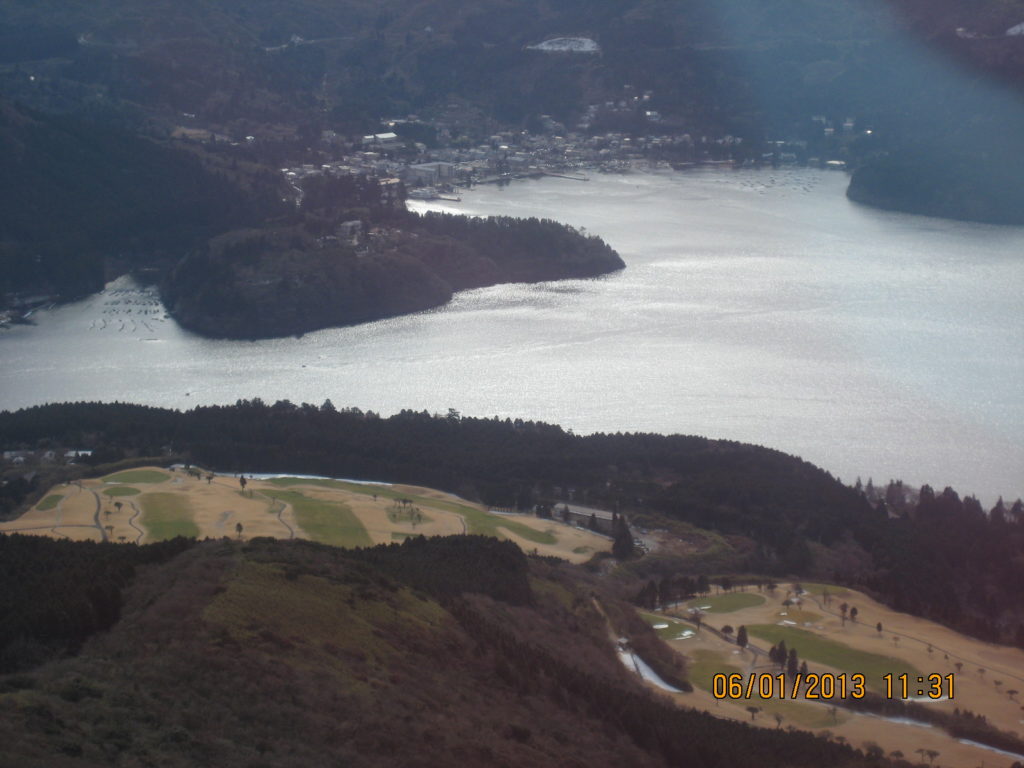
The best views of the lake in combination with Mount Fuji can be enjoyed from Moto-Hakone (a few steps south from the sightseeing boat pier), from the Hakone Detached Palace Garden and from the sightseeing boats cruising the lake.

However, that clouds and poor visibility often block the view of Mount Fuji, and you have to consider yourself lucky if you get a clear view of the mountain. Visibility tends to be better during the colder seasons of the year than in summer, and in the early morning and late afternoon hours.
Hakone Sightseeing Cruise
Hakone sightseeing cruise is an interesting way of exploring Lake Ashi. It employs three beautifully designed pirate ships to ferry passengers across the lake. All three ships are modeled after famous 17th/18th-century warships and typically has 2 level of enclosed deck and 2 level of open deck.
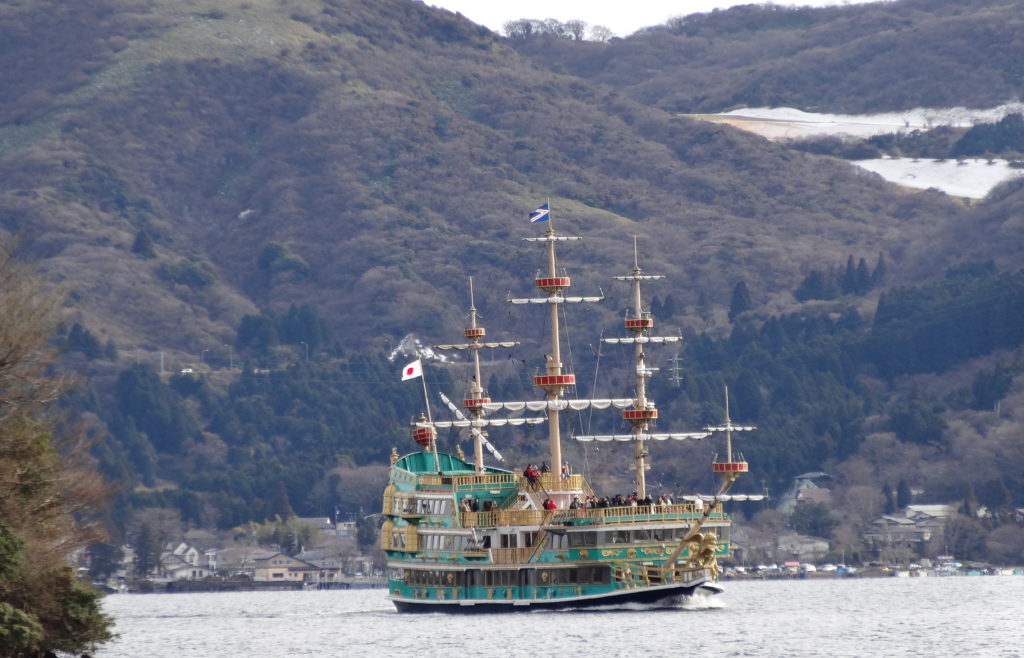
The cruise performs a round trip of Lake Ashi, serving the three ports of Togendai, Hakone-Machi and Moto-Hakone. The whole trip will take about 30 minutes or so with boats leaving every twenty minutes. Schedules are subject to change based on the season so refer to the Hakone Sightseeing Cruise website for the latest information.
We pretty much called it a day from here and headed back to our hotel. With a day trip during the short days of winter, it was difficult to fit much more in. We are slow travelers, we like to throw in detours as we go and adjust plans when something takes our interest along the way.
However, we will be back on another trip to visit Hakone Open Air Museum (art gallery), Hakone Checkpoint and Owakudani, as we discovered there is so much more to see and do in the area and one day is not enough to fully enjoy this beautiful town as we planned.
Note: The information provided in this post was correct at time of publishing but may change. For final clarification please check with the relevant service.

